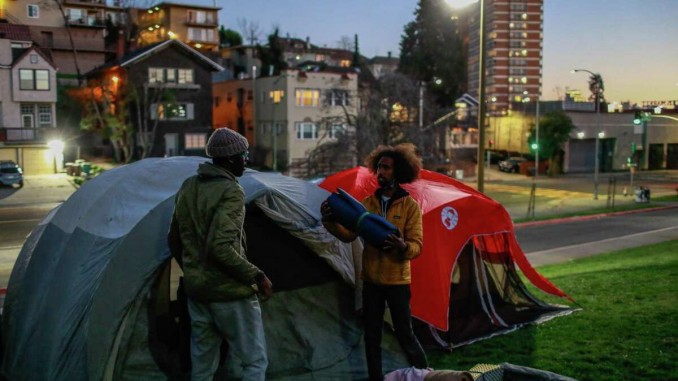
On Friday, February 18th, the majority of the Oakland Unified School District (OUSD) Board voted, for the third time, to close and merge schools in the next two years. These schools are located in poor and working-class areas, with a majority of Black and Latino students. The Board continued its claim that this had to be done to solve the schools’ budget deficit. But the proposal was put forward without proof of the deficit, and also without any discussion or consultation with the school communities involved.
During the previous weeks, at each of two online School Board meetings, close to 2,000 community members attended. Hundreds spoke out against the closures, including children as young as five years old. But despite this expression of outrage and opposition, the School Board still went forward with its plan to close schools.
Between the announcement of proposed closures and the third vote by the Board, Oakland students, teachers, staff and parents actively mobilized. They held town halls and meetings at the affected school sites. They held rallies, marches, walkouts and other protests, expressing their anger and showing their resistance to this attack on their communities and the students’ futures.
At Westlake Middle School, one of the schools that was originally threatened with closure, a staff member, Moses Omolade and a teacher, Andre San-Chez, went on a hunger strike. They were willing to put their bodies on the line to defend the interests of their students and families. In response, members of the School Board began a series of cynical maneuvers. Some of them went to Westlake and told Omolade and San-Chez they were crossing Westlake off the closure list – thinking that the two would then stop the hunger strike. But Omolade and San-Chez saw through this divide-and-conquer strategy, and continued their hunger strike and their participation in organizing against the closures.
With the rallies, marches and neighborhood town halls continuing, the pro-closure School Board members pulled another maneuver. They said they would hold a special public Board meeting to once again vote on a new proposal that would further limit the closures, and Omolade and San-Chez would be allowed to speak before the vote was taken. The condition for holding the meeting was that their hunger strike would end after the meeting. When Omolade and San-Chez announced this at a rally held by teachers, parents, students and staff, at the state building in Oakland on Thursday, February 17th, the crowd cheered and a feeling of optimism was in the air. That was destroyed the next night when the majority of the Board again voted for the closures. San-Chez is still continuing the hunger strike at great risk to his health.
This was a huge disappointment to those who had been organizing and mobilizing during the previous weeks and to the hunger strikers themselves. But the fight to stop the cuts and closures doesn’t need to stop because of the School Board’s shameful actions. There are other levels of government that can be targeted. The Oakland City Council already passed a resolution calling on the State of California to eliminate the Oakland School District’s debt and keep all the schools open. Alameda County Board of Education passed a resolution condemning school closures and the undemocratic process that OUSD has engaged in (Oakland is in Alameda County)). And two members of the California State Legislature introduced a bill calling on the State to halt the closures. With a recently announced State budget surplus of $45.7 billion dollars, there is no excuse for any schools in California to face closure.
Earlier on February 17, there was a rally of a few hundred in downtown Oakland, called by the ILWU (International Longshore and Warehouse Union) to protest the plan for a massive construction project on public lands on the Oakland waterfront as well as against school closures. The proposed plan includes a 400-room luxury hotel, a massive condo development and a new stadium for the Oakland A’s baseball team. It would result in closing part of the Oakland Port and the loss of thousands of jobs and a further gentrification of Oakland. The plan is headed by billionaire John Fisher, who is also an active promoter of education privatization through the development of charter schools.
There are many possibilities to develop a powerful struggle in the face of these attempts to privatize Oakland’s schools and other resources. Oakland teachers have threatened a district-wide teachers’ strike against the cuts and closures. But for this struggle to have the most impact, it will take a much wider and broader mobilization. It will require the active participation not only of teachers, but also of students, staff, parents and other community members in Oakland. A movement against this attack on the young people of Oakland and the privatization of public resources and services could engage and include other workers who are also under attack, like those working in longshore, transit, healthcare and other sectors.
This isn’t just Oakland’s fight. Schools and working-class communities across California are under attack. We all have reasons to join and fight together. Workers produce all the products and provide all the services that make Oakland and the State of California run. It has never been a question of enough money or resources. California is the fifth largest economy in the world. The question is who will decide how these resources are used.

